50 Best and Worst Retirement Towns
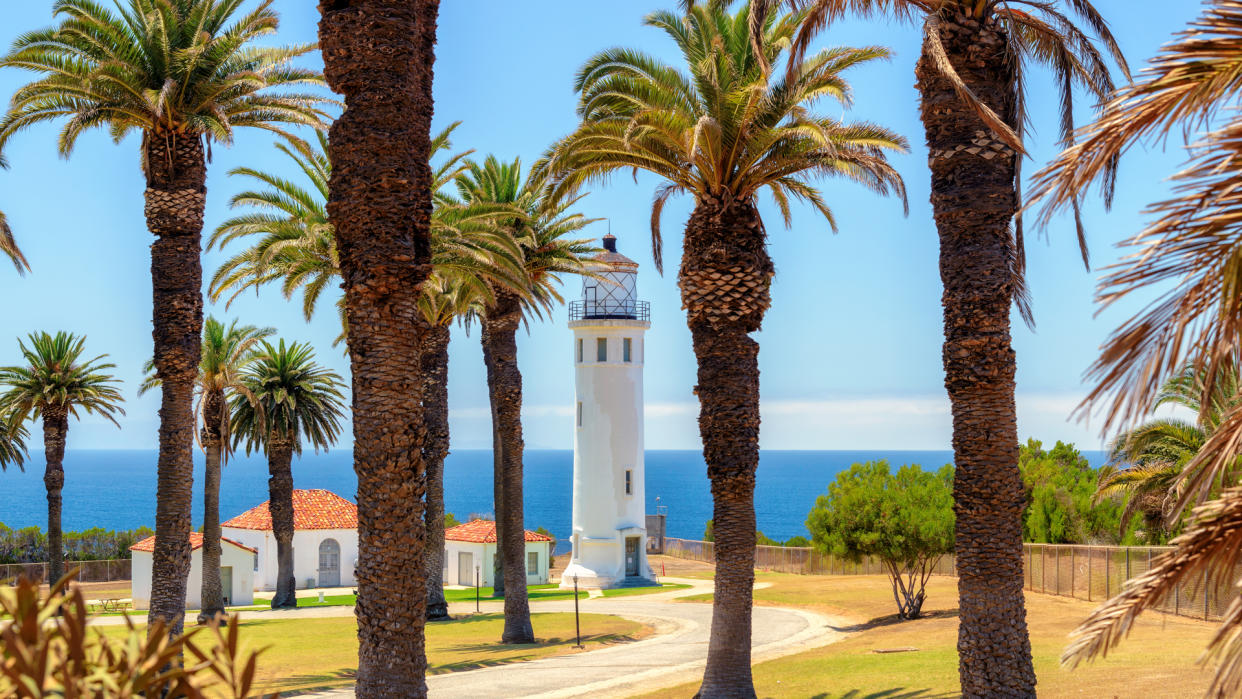
For many of us, the town we retire to isn't hard to work out. After all, living near to family and friends is often one of the most important elements of what most people envision for their golden years. And, for that matter, a lot of people won't want to part ways with a town or region they've called home for decades.
Related: These Are the 30 Best Small Towns To Retire in America
Consider: If You Planned To Retire in the Next 5 Years, Should You Just Do It Now?
However, many others are happy to use retirement as a chance to relocate. Sometimes it's a matter of seeking out a warmer climate, whereas others might just want to trade the high cost of living and fast pace of a major city for somewhere better suited to living on a fixed income. Regardless of why you might want to move, though, it's important to carefully consider your desired landing spot. If you want your nest egg to last, you have to plan carefully around certain expenditures like annual cost of living, or consider what it will cost should you need to hire a home healthcare worker for you or your spouse.
That's why GOBankingRates put together a study of which cities and towns are best suited for retirement. Taking the 100 municipalities with the highest percentage of the population ages 65 or over, the study scored each location on a number of different factors to determine which are the best — and worst — towns for retirement.
Last updated: Oct. 13, 2021

Best Retirement Towns
The best retirement towns for this study needed to have a large population of senior citizens, lower-than-average costs for living and purchasing a house, low costs for specialized types of senior care like a home health aide, low or no taxes on retirement and/or Social Security income and a low crime rate.
GOBankingRates determined the 100 towns with the highest percentage of senior citizens in its population and scored each town on those metrics before coming up with a final ranking. Here are the 25 best retirement town in the U.S.
Retiring in 2021? Here's What You Need To Know
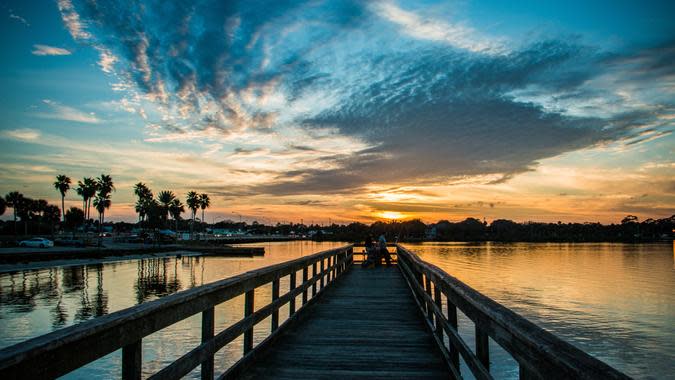
25. Port Orange, Florida
Percentage of the population 65 and older: 24.19%
Median list price: $262,319.17
Annual cost of living: $17,877.93
Port Orange is located just south of Daytona Beach, near the Ponce De Leon Inlet. The percentage of the population that's 65 and older is relatively low compared to the other best retirement towns at just 24.19%.
Read: Downsides of Retirement That Nobody Talks About

24. Merritt Island, Florida
Percentage of the population 65 and older: 22.71%
Median list price: $348,761.67
Annual cost of living: $17,715.37
Any city in Florida merits a close look for retirement if for no other reason than the relatively low cost of hiring a home health aide. The average cost for doing so in the Sunshine State is $46,904 per year. And, with Merritt Island located on the Atlantic Coast just east of Orlando, you can take the grandkids to Walt Disney World Resort when they visit.
See: All You Need To Know About the Economy
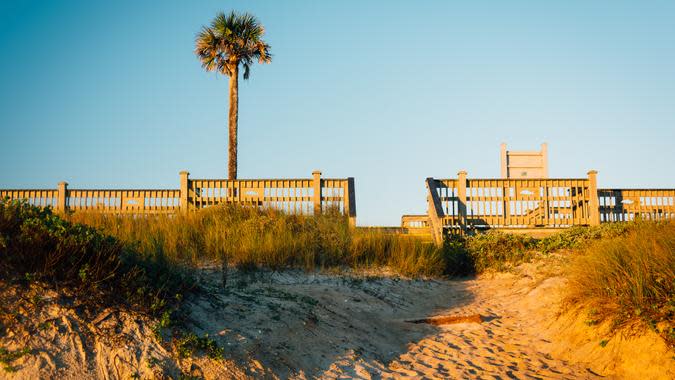
23. Palm Coast, Florida
Percentage of the population 65 and older: 27.04%
Median list price: $266,087.08
Annual cost of living: $18,636.01
Just south of Jacksonville, Palm Coast sits right next to Faver-Dykes State Park for those nature lovers interested in retiring in the Sunshine State.
Read: The First Thing You Should Do With Your Social Security Check

22. North Fort Myers, Florida
Percentage of the population 65 and older: 47.17%
Median list price: $211,655
Annual cost of living: $20,569.09
While other factors help make up for it, North Fort Myers is relatively expensive to call home. The city's annual cost of living is one of just two among the best retirement cities that's $20,000 or more.

21. New Smyrna Beach, Florida
Percentage of the population 65 and older: 36.35%
Median list price: $350,404.17
Annual cost of living: $18,043.81
Another major factor that separates Florida from other states is taxes; the state doesn't tax either Social Security or retirement income. So, the fact that New Smyrna Beach borders Port Orange — another of the best retirement towns — is less surprising given how well Florida can serve as a tax haven for retirees.

20. Bonita Springs, Florida
Percentage of the population 65 and older: 38.75%
Median list price: $387,469.71
Annual cost of living: $19,935.74
Bonita Springs' low rate of violent and property crimes — just 10.2 incidents per 1,000 residents — is one of the factors that helped place this suburb located south of Fort Myers and Cape Coral among the best towns for retirement.
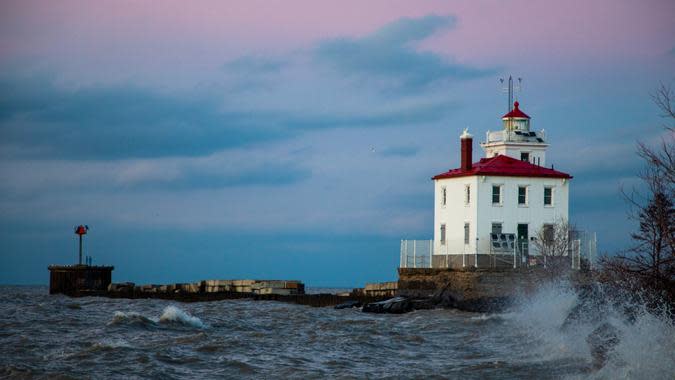
19. Mentor, Ohio
Percentage of the population 65 and older: 20.81%
Median list price: $184,945.42
Annual cost of living: $16,576.18
If you're looking to spend your retirement passing along all the wisdom you've gained during your career, this lakeside Cleveland suburb might be right for you. The fact that it has the lowest percentage of seniors of any towns on this list means it has more young people to choose from when selecting a protégé.
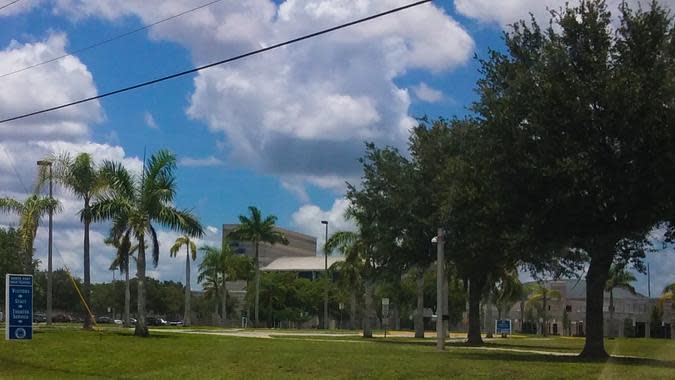
18. North Port, Florida
Percentage of the population 65 and older: 23.45%
Median list price: $227,762.21
Annual cost of living: $18,336.93
North Port is located southwest of St. Petersburg next to the Myakka River State Park. And while the low median home price makes it attractive, it ranks lower because of the relatively low percentage of retirees living there.
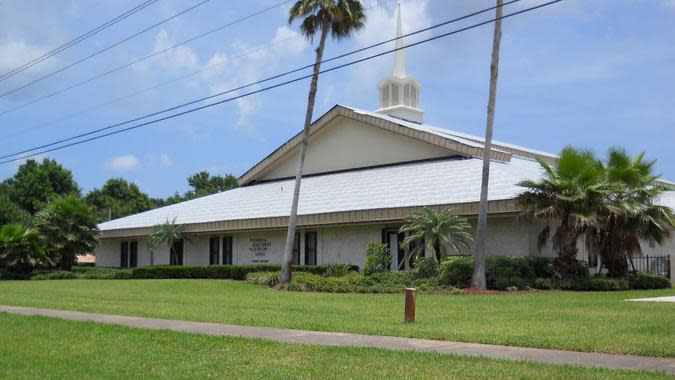
17. Palm City, Florida
Percentage of the population 65 and older: 29.91%
Median list price: $407,333.29
Annual cost of living: $18,388.44
Just south of Port St. Lucie, Palm City is a great town to spend your golden years -- provided you can afford a home there. The median list price currently sits over $400,000.

16. Green Valley, Arizona
Percentage of the population 65 and older: 77.3%
Median list price: $196,879.17
Annual cost of living: $17,180.78
Located almost equidistant from Tucson and the Mexican border, Green Valley could be a great place for any seniors interested in living where they can easily experience Southwest and Mexican culture.

15. Estero, Florida
Percentage of the population 65 and older: 45.31%
Median list price: $334,566.63
Annual cost of living: $20,336.46
Another example of two of the best retirement towns bordering one another, Estero sits just north of Bonita Springs on the Gulf Coast. Cost of living is higher here, but the crime rate is a low 7.63 incidents per 1,000 residents.

14. Westlake, Ohio
Percentage of the population 65 and older: 22.57%
Median list price: $333,691.67
Annual cost of living: $16,608.64
One of just two states other than Florida to see multiple cities rank on this list, Ohio also checks in at No. 14 with Westlake — a burg sitting west of Cleveland.
Read More: $3,600 Stimulus Payments for Families to Start in July

13. Sebastian, Florida
Percentage of the population 65 and older: 31.6%
Median list price: $232,143.96
Annual cost of living: $18,417.60
Wedged between the St. Sebastian River Preserve State Park and the Pelican Island National Wildlife Refuge, Sebastian could be ideal for retirees interested in spending a lot of time taking in the natural beauty of Florida's Atlantic coast.
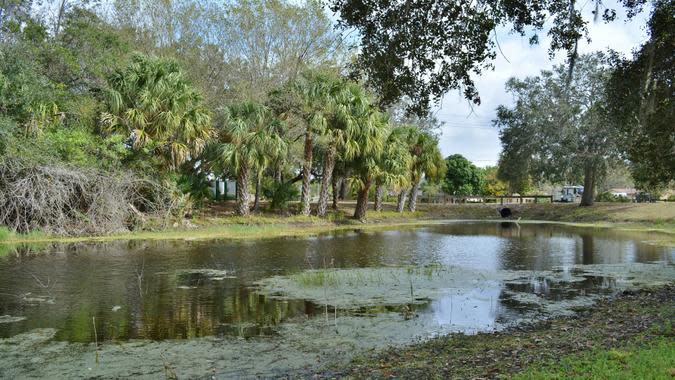
12. Port Charlotte, Florida
Percentage of the population 65 and older: 29.96%
Median list price: $223,664.50
Annual cost of living: $17,160.46
Located on Charlotte Harbor at the mouth of the Peace River, Port Charlotte is one beach community where the typical home can be had for a reasonable price. The median list price for homes there is under $225,000.

11. Englewood, Florida
Percentage of the population 65 and older: 49.4%
Median list price: $427,676.04
Annual cost of living: $18,612.86
Of course, if you want to pay a bit more to live right on the Gulf Coast, Englewood is just west of Port Charlotte but features a median list price that's almost twice as high.
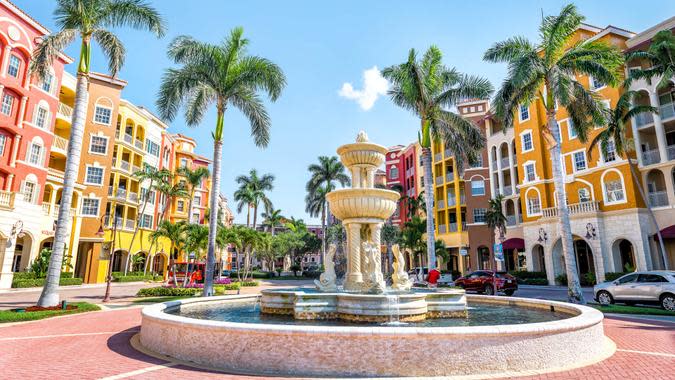
10. Naples, Florida
Percentage of the population 65 and older: 51.52%
Median list price: $400,611.58
Annual cost of living: $18,057.59
While plenty of people probably feel like retiring to Naples, Italy, would be a real blast, Naples, Florida, might be a bit more realistic. Not only is the Florida city just northwest of Everglades National Park, but over half the population is over the age of 65.

9. Marco Island, Florida
Percentage of the population 65 and older: 51.45%
Median list price: $601,562.50
Annual cost of living: $17,835.45
The drive from Naples to the Everglades will take you right past Marco Island, the No. 9 best retirement town. While that median list price is pretty hefty, the island also features low crime and a large population of fellow seniors.

8. Hilton Head Island, South Carolina
Percentage of the population 65 and older: 34%
Median list price: $477,520.83
Annual cost of living: $16,396.95
South Carolina's only entry to this list, Hilton Head Island is off the Atlantic coast just across the Georgia border from Savannah.
Check Out: 35 Retirement Planning Mistakes That Waste Your Money

7. Bella Vista, Arkansas
Percentage of the population 65 and older: 31.98%
Median list price: $196,020.83
Annual cost of living: $17,105.55
Bella Vista sits on Arkansas' northern border with Tennessee. And, if you're a big Razorbacks fan, you would be close enough to Fayetteville to drive into town for University of Arkansas games.

6. Venice, Florida
Percentage of the population 65 and older: 61.05%
Median list price: $295,852.50
Annual cost of living: $18,426.67
The ubiquity of the state of Florida as a hub for retirees should be pretty clear by now. Located just south of Sarasota, Venice is the second Florida town named for an Italian city on this list.
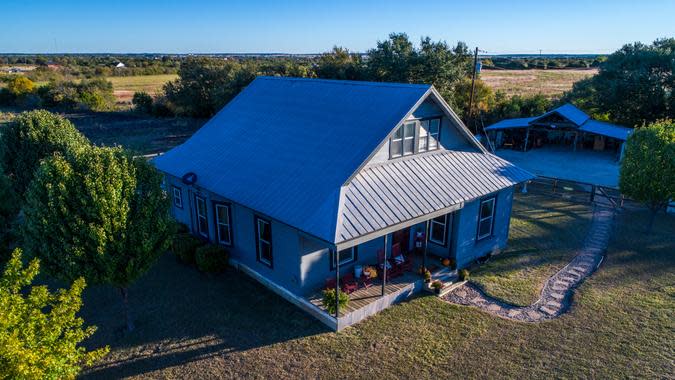
5. Georgetown, Texas
Percentage of the population 65 and older: 29.79%
Median list price: $329,924.13
Annual cost of living: $18,452.76
If ocean beaches and oranges aren't quite your speed but great local music and succulent, smoked brisket are, this Austin, Texas, suburb could be the right spot for you. At $9,100 annually, the price of adult day healthcare is the lowest among all of the cities listed here.

4. Punta Gorda, Florida
Percentage of the population 65 and older: 55.31%
Median list price: $274,093.13
Annual cost of living: $17,323.11
Just across the mouth of the Peace River from Port Charlotte lies Punta Gorda, where over half the population is over the age of 65.
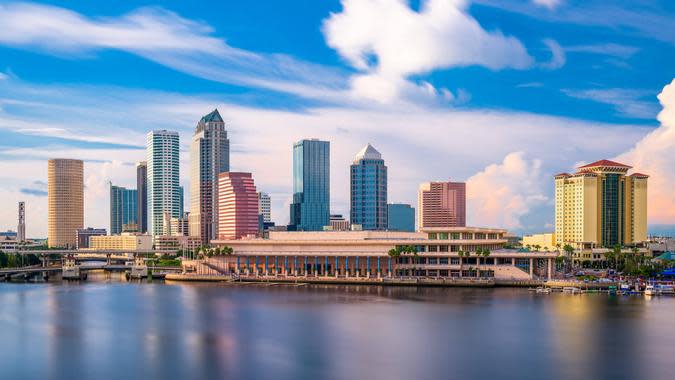
3. Sun City Center, Florida
Percentage of the population 65 and older: 73.73%
Median list price: $220,978.75
Annual cost of living: $19,182.78
This Tampa suburb features a very affordable median list price of about $220,000. That's in addition to the second-lowest rate of violent and property crime in the study.
Pictured: Tampa, Florida

2. Hot Springs Village, Arkansas
Percentage of the population 65 and older: 61.52%
Median list price: $207,977.08
Annual cost of living: $17,081.85
The only other state with multiple entries on this list aside from Florida and Ohio is Arkansas. Hot Springs Village is located west of Little Rock and near the Ouachita National Forest.
See: Most Affordable Places To Retire in the US
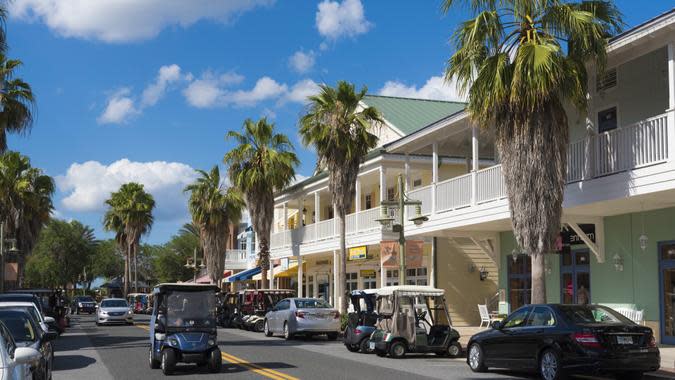
1. The Villages, Florida
Percentage of the population 65 and older: 78.61%
Median list price: $265,920.83
Annual cost of living: $17,901.26
It's fitting that the top spot goes to a city in Florida called "The Villages" in its plural as the Sunshine State completely dominated this list. Of the 25 towns listed here, just seven were from outside of the state of Florida. This central Florida town near the Ocala National Forest wins the top spot, though, with the lowest crime rate and nearly four out of five inhabitants over 65.

Worst Retirement Towns
Of course, attractive retirement destinations can be a double-edged sword. High costs and high taxes are bound to eat away at your nest egg quickly, especially if you have to spend a large chunk of it to buy your new home.

25. Lincoln, California
Percentage of the population 65 and older: 27.18%
Median list price: $252,183.33
Annual cost of living: $18,406.31
That quarter-million median list price is somewhat low for both this list and the state of California. But, this Sacramento suburb has a relatively low proportion of seniors in the population, and since it's in the Golden State, retirement income is taxed.

24. Peabody, Massachusetts
Percentage of the population 65 and older: 20.89%
Median list price: $411,054.13
Annual cost of living: $18,015.69
While amateur historians would probably enjoy living in this town right outside Salem and its Salem Witch Museum, seniors are only a fifth of the population, and the median list price on a home exceeds $400,000.
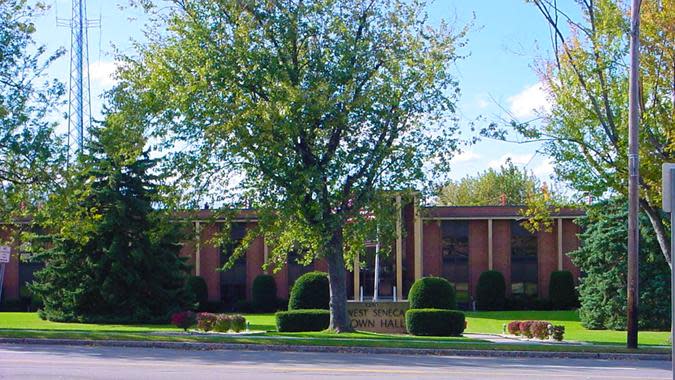
23. West Seneca, New York
Percentage of the population 65 and older: 20.27%
Median list price: $163,741.58
Annual cost of living: $17,423.66
This Buffalo suburb lands on the "worst" list due to its relatively small senior population, high crime and high costs for a home health aide. But, that median list price is the lowest of all the prices listed in this study.
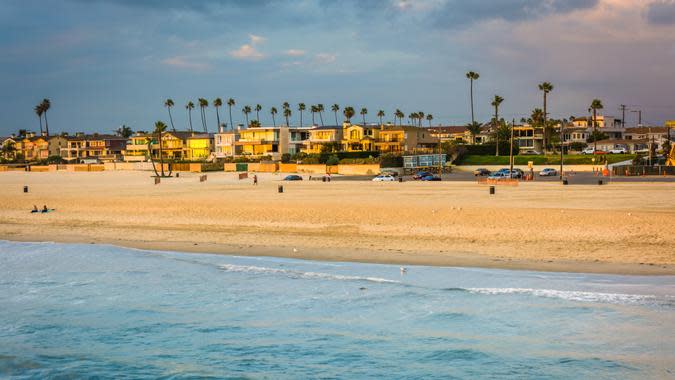
22. Seal Beach, California
Percentage of the population 65 and older: 37.99%
Median list price: $294,816.67
Annual cost of living: $18,513.28
Just east of Long Beach, Seal Beach would land you in the sunny climes of Southern California. But, that comes with California's high costs for hiring a home healthcare worker or homemaker — an average of $59,488 annually.

21. Prescott Valley, Arizona
Percentage of the population 65 and older: 23.12%
Median list price: $303,249.96
Annual cost of living: $19,726.95
Prescott Valley is situated right smack between the Coconino and Prescott National Forests, so nature lovers might be able to overlook the relatively high cost of living and the study's highest annual costs for adult day healthcare.
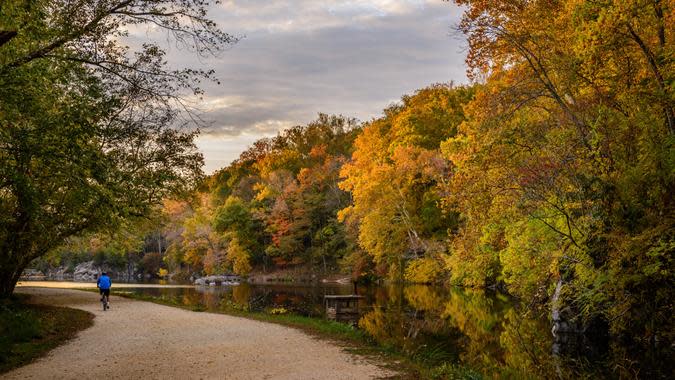
20. Potomac, Maryland
Percentage of the population 65 and older: 21.4%
Median list price: $1.25 million
Annual cost of living: $20,885.17
Potomac is named for the river it's sitting on, just northwest of Bethesda and near to the nation's capital. And it would certainly appear as though D.C. commuters are living there based on the high cost of living and the whopping $1.25 million median home list price.

19. Longview, Washington
Percentage of the population 65 and older: 20.48%
Median list price: $256,406.25
Annual cost of living: $15,800.16
Longview sits just across the Columbia River from Oregon and right in the Interstate 5 corridor. And while it does have relatively affordable homes and a very low cost of living, the high crime rate and smaller population of seniors land it on the worst list.
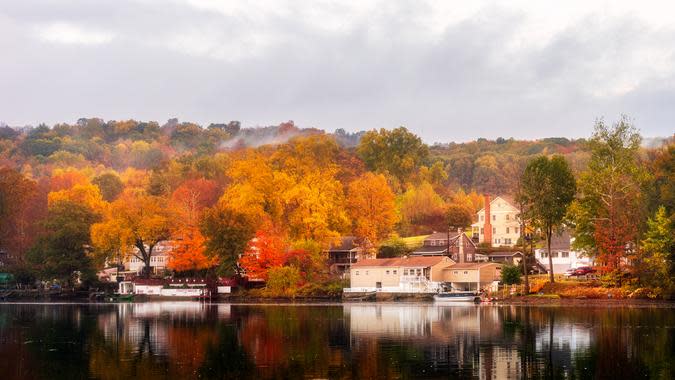
18. Shelton, Connecticut
Percentage of the population 65 and older: 20.39%
Median list price: $360,764.17
Annual cost of living: $21,053.91
Just outside of the swanky city of New Haven, Shelton is just a little pricey for most retirees. It costs over $20,000 a year to cover expenses and just one in five residents are seniors.

17. Edmonds, Washington
Percentage of the population 65 and older: 20.78%
Median list price: $584,77.08
Annual cost of living: $16,663.56
Located on the Puget Sound just north of Seattle, Edmonds has the lowest cost of living on this list. But, it also has a median list price approaching $600,000 and a relatively high crime rate.
Take a Look: Best Places To Retire If You Have No Savings
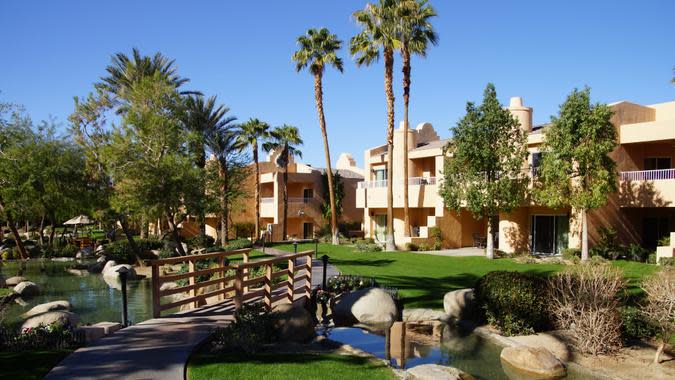
16. Rancho Mirage, California
Percentage of the population 65 and older: 51.69%
Median list price: $621,321
Annual cost of living: $19,499.09
This California town is located in the Coachella Valley between Palm Desert and Palm Springs. And while the high cost of a home lands it on the bottom portion of this study, there are clearly plenty of seniors who have decided it's worth the money to live there — more than half the population is over the age of 65.

15. Fort Lee, New Jersey
Percentage of the population 65 and older: 23.87%
Median list price: $489,700
Annual cost of living: $21,680.17
Sure, retiring to a city with views of the Manhattan skyline might sound pretty appealing. But this New Jersey town across the Hudson River comes with very high costs for living there.

14. Grants Pass, Oregon
Percentage of the population 65 and older: 19.82%
Median list price: $342,323.67
Annual cost of living: $16,318.03
Near to Medford and just east of the Rogue River-Siskiyou National Forest is Grants Pass, Oregon. While the annual cost of living is pretty low, that's likely driven by the high crime rates.

13. Banning, California
Percentage of the population 65 and older: 26.62%
Median list price: $277,312.50
Annual cost of living: $19,839.76
Banning is situated outside the San Bernardino National Forest and a short drive from Joshua Tree National Park. The combination of relatively high crime rates and annual expenses might force you to reconsider a move there.

12. Hemet, California
Percentage of the population 65 and older: 21.87%
Median list price: $276,283.29
Annual cost of living: $18,158.16
Much like Florida on the "best" side, California takes up a large number of the spots on the "worst" list due to the high cost for hiring home health aides or homemakers and the general cost of living expenditures. Hemet actually sits just to the southwest of Banning, the previous city on this list.

11. Palm Desert, California
Percentage of the population 65 and older: 32.96%
Median list price: $398,122.83
Annual cost of living: $19,426.23
The warm, dry climate of California's high desert makes it a popular destination in retirement for many, but there are some good reasons to decide against cities like Palm Desert — the less-famous neighbor of Palm Springs. The city's median list price and annual cost of living are both high, as is the rate of violent and property crimes.

10. La Quinta, California
Percentage of the population 65 and older: 23.98%
Median list price: $616,387.50
Annual cost of living: $19,529.52
La Quinta is another pricey city in the Coachella Valley, located east of Palm Desert. Home prices here are much higher than they are there, though.

9. Palm Springs, California
Percentage of the population 65 and older: 30.02%
Median list price: $479,707.83
Annual cost of living: $19,661.36
And, of course, there's the most notable city of the Coachella Valley bunch. That would mean if you're driving east on Interstate 10 in Southern California, in one brief stretch you'll be able to spot four of the worst retirement towns out of your passenger-side window — Palm Springs, Rancho Mirage, Palm Desert and La Quinta.

8. Rancho Palos Verdes, California
Percentage of the population 65 and older: 25.36%
Median list price: $1.37 million
Annual cost of living: $20,186.11
Moving west from the Coachella Valley to the Pacific Coast, Rancho Palos Verdes neighbors Redondo Beach and nearby Long Beach. And given the gorgeous beachside location, it also comes with a massive $1.37 million median list price for its homes and more than $20,000 a year in living expenses.

7. Walnut Creek, California
Percentage of the population 65 and older: 28.9%
Median list price: $754,333.33
Annual cost of living: $20,333.36
Walnut Creek is northeast of Oakland near the Mt. Diablo State Park. However, at least some of the high costs of the Bay Area appear to have stretched there — a median-priced home is listed at over $750,000.
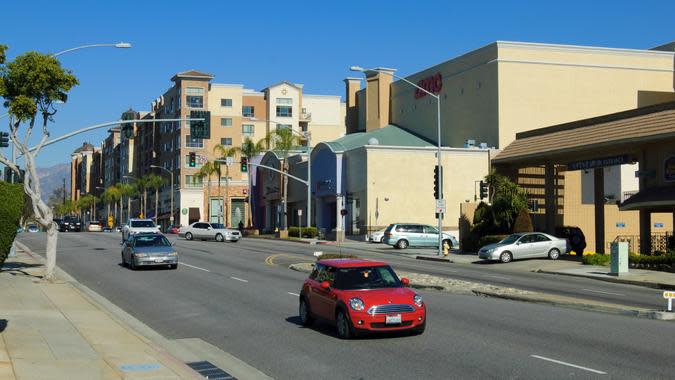
6. Monterey Park, California
Percentage of the population 65 and older: 20.92%
Median list price: $685,520.75
Annual cost of living: $20,510.78
Located just east of Los Angeles, Monterey Park might be a dim sum lover's paradise, but it's a thrifty person's hell. New homes are listing with a median price of almost $700,000, and you'll still need over $20,000 a year to cover your necessities.
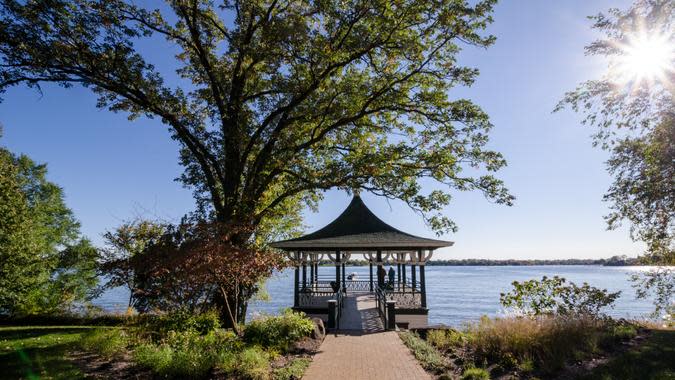
5. Minnetonka, Minnesota
Percentage of the population 65 and older: 19.75%
Median list price: $397,287.04
Annual cost of living: $17,781.78
Minnesota is not a tax-friendly state for seniors, with the state taxing both retirement income and Social Security income. So, it shouldn't be surprising to see the Minneapolis suburb Minnetonka landing near the top of this list. In addition, only 19.75% of the residents here are over the age of 65 -- the lowest percentage on this list
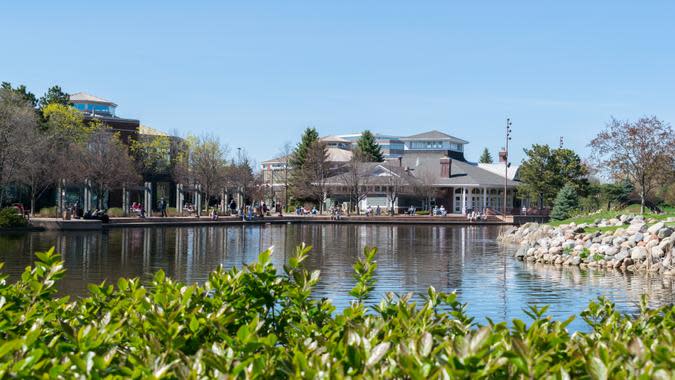
4. Edina, Minnesota
Percentage of the population 65 and older: 21.04%
Median list price: $654,900
Annual cost of living: $17,781.24
It's interesting to note how the best and worst retirement towns have tended to bunch together. Similar to how spots in California and Florida featured bordering burgs throughout the study, the Minnesota suburb of Edina sits just to the east of Minnetonka.
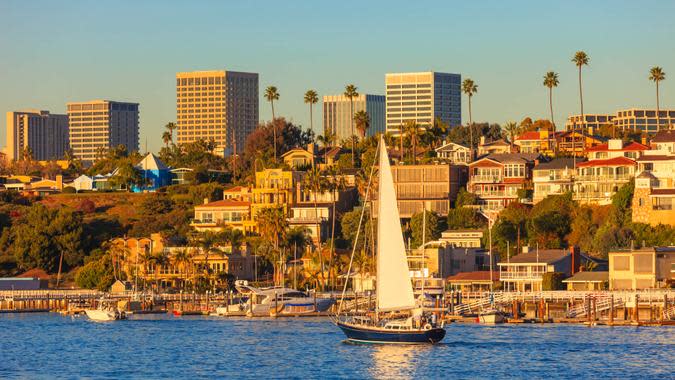
3. Newport Beach, California
Percentage of the population 65 and older: 21.73%
Median list price: $2.55 million
Annual cost of living: $17,801.55
To be clear, this sleepy Southern California beach community in Orange County would be an ideal place to retire — particularly for fans of "Arrested Development" — but the median list price of a stunning $2.55 million puts it well out of reach for most Americans.

2. Cerritos, California
Percentage of the population 65 and older: 21.79%
Median list price: $758,182.42
Annual cost of living: $20,564.40
Cerritos is another city in the greater Los Angeles area where the cost of living and median list price are just too high for many retirees to bear.

1. Roseville, Minnesota
Percentage of the population 65 and older: 21%
Median list price: $285,845.83
Annual cost of living: $17,917.07
Roseville is the third Minneapolis suburb in the top five worst retirement towns. The combination of high taxes and nearly 60 violent or property crimes per 1,000 residents help make Roseville the worst town for retirees.
[rock-component slug="more-from-gobankingrates"]
Methodology: GOBankingRates found the 50 best and worst retirement towns in America by analyzing the top 100 towns with a population between 10,000 and 100,000 that also had the (1) highest percentage of its population age 65 years and older, as sourced from the United States Census Bureau’s 2017 American Community Survey five-year estimates. GOBankingRates then analyzed those 100 cities across the following factors: (2) violent and property crimes per 1,000 residents in the given city, sourced from NeighborhoodScout and (3) the average median list price of the past year (June 2018 to June 2019) in each city, sourced from Zillow. GOBankingRates then took the Bureau of Labor Statistics Consumer Expenditure Survey’s 3Q '17 – 2Q '18 annual expenditures for a consumer unit 65 years and older in terms of groceries (“food at home”), healthcare, utilities (“utilities, fuels and public services”) and transportation ("gas, other fuels and motor oils” and “other vehicle expenses”). These annual expenditures were then factored out for each city using Sperling’s Best Places cost of living indices and combined to give a (4) total annual cost of living expenditure for each city. Other factors analyzed on a city-by-city basis included (5) taxes on Social Security benefits (yes or no), sourced from AARP; (6) taxes on retirement income (yes or no), sourced from individual state websites; (7) the annual cost of an adult day healthcare service, available on the state level; (8) the annual cost of homemaker services, available on the state level; and (9) the annual cost of a home health aide, available on the state level, all sourced from Genworth’s 2018 Cost of Care Survey. These 9 factors were scored, with a lower score being better, and added together to determine the best and worst towns in America for retirees. All research was conducted and accurate as of July 30, 2019.
This article originally appeared on GOBankingRates.com: 50 Best and Worst Retirement Towns
